I learned the term “mentor text” for the first time this semester while taking this course, and it opened up a whole new world of looking the use of literature in the classroom. The use of mentor texts means that students do not merely read text but instead read a text through the lens of a writer (Miner et al., 2014). In the article written by Pytash & Morgan (2014), define mentor texts as a teaching tool to improve students’ structure and use of words in their writing. Miner et al. (2014) elaborates on the usage of mentor texts by referencing Graham and Perin (2007; as cited in Miner et al.) in the following passage:
“They recommend that teachers provide students with opportunities to read, analyze, and emulate ‘the critical elements, patterns, and forms embodied in the models in their own writing’ (p. 20).”
So in essence, mentor texts are used as models beyond just the teacher in the classroom, which is a great way to expose students to several variations and styles of writing that can help students individualize their own style of writing as opposed to being limited to only seeing the teacher’s style of writing. At first it was difficult for me to expand this definition of mentor texts to go beyond the written text within books until I began to see the value in picture books, songs, poems, and other forms of media that either contain or can inspire words. These other forms of mentor texts can be just as, if not more, powerful as books (McDowell, 2015). Unfortunately, this is not reflected in my own list of mentor texts that I curated. There are just so many wonderful books in children’s literature. In my own classroom, however, I hope to add in more diversity in my choices of mentor texts.
Several of the mentor texts listed are are mentor texts that I saw being used in my 1st grade practicum class this semester or in a kindergarten classroom that I often substitute for. The majority of the mentor texts are geared towards writing opinion or persuasive texts as that is a consistent theme in first grade writing. However, I also was able to include a book for inspiring a fable, one book geared towards learning mathematical concepts of time and relative size, and a few books that encourage empathy and reflection on positive behaviors.
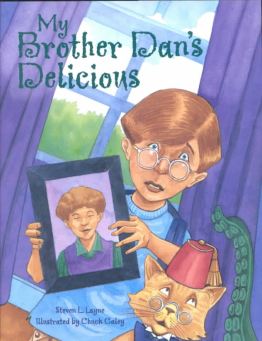
My Brother Dan’s Delicious is a fun story about a boy named Dan who is home alone and feels the presence of a monster that he believes is trying to eat him. While the monster remains unseen throughout the book, Dan lists out loud the reasons why the monster should eat his brother Dan instead of him. This book would be a great mentor text in introducing persuasive writing. In the first grade practicum that I am in, the students wrote a persuasion piece based off of this book in which they are trying to convince the monster to eat something or someone else besides themselves.
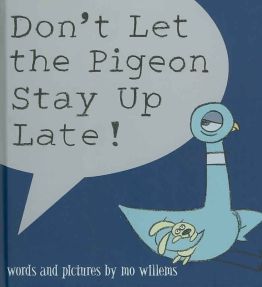
Don’t Let the Pigeon Stay Up Late! by Mo Willems, is a fun book that begins with a man who says, “Oh, good, it’s you. Listen, I’m getting tired and I need to brush my teeth. Can you do me a favor?” and when you turn the page, it presents the title Don’t let the Pigeon Stay Up Late! The book then goes on with the pigeon trying to convince the reader that they are not tired and that it does not need to go to bed. Like, My Brother Dan’s Delicious, this book can also be used as a mentor text for persuasive writing as the pigeon presents entertaining arguments. The other books in Mo Willem’s pigeon series will also make great mentor texts. Many of the sentences also end in exclamation points and include commas that can be helpful when giving examples of how punctuation effects how something is read to improve fluency.
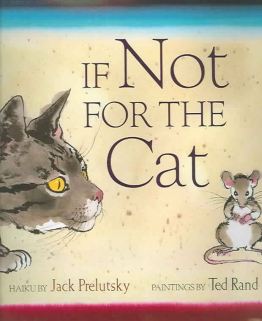
If Not for the Cat by Jack Prelutsky is a book of animal haikus that are great for younger students in decoding one and two-syllable words. When reading haikus, students will also learn to identify descriptive words as well a creating their own list of descriptive words when it comes time to creating their own. A way for it to be used in the subjects of social studies and science, is have students read informational texts to collect facts about the animal of their choosing and have them create haiku riddles like that in If Not for the Cat.

Flat Stanley by Jeff Brown is a book that can be used in first grade. It is about a boy who became flat after a shelf fell on top of him. In the book, Stanley is put into an envelope and sent to California amongst other “flat” adventures. I saw this book being used in a Kindergarten classroom where they were beginning to talk about geography. However, I can see this book being used in the first grade to write opinion pieces about where the students would go if they were Flat Stanley and why. This story could also be used to practice writing own letters and sending them with their own “Flat Stanley”s to friends and family members.

Chalk by Bill Thomson is a wordless picture book that begins with a group of children who come upon a dinosaur statue with a bag of chalk hanging from its mouth. They begin drawing different things with the chalk and these drawn objects magically come to life. One of the objects that a child draws is a t-rex that comes to life and begins chasing after the children. One child thinks quickly and draws a raincloud. It begins to rain and washes the chalk and the t-rex away. This book is great for making predictions and for young students to take on into their own fictional pieces in writing workshop. Prompts about what the students would draw if they had magical chalk could also be given as an option for an opinion piece.

Mysteries of Harris Burdick by Chris Van Allsburg is a picture book that features several illustrations that are strange and emit an eerie aura of mystery and beg the question “What is going on in here?” It is the perfect book to present to students as prompts for writing suspense and mystery stories during writing workshop or quick writes. In the first grade, this book can be used as students create their own fairy tales and fables. The teacher could show a picture to the class and write a short fable together along with a moral. This can be done a couple of times as a class and then allowing the students to do write their own independently.
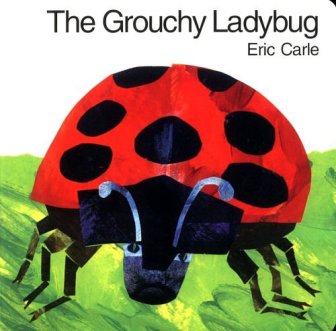
The Grouchy Ladybug is story about a ladybug who finds himself instigating conflict with different creatures that he encounters throughout the story. The way the book is physically set up allows the reader to follow the ladybug throughout the day as each page shows a clock on the top right corner as shown below:
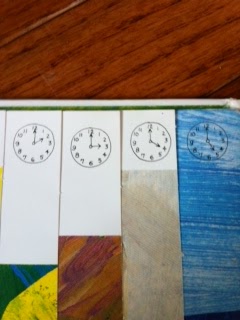
This is perfect for first grade as this is the grade level in which students begin to learn how to tell time in math. This story is also great for reviewing vocabulary about comparing objects as well as relative size.
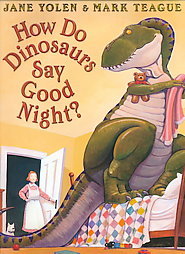
This book introduces different types of dinosaurs and poses different negative behavior that children might exhibit when it comes to bedtime but illustrating dinosaurs exhibiting these behaviors instead. It is a fun way to introduce dinosaurs and discuss positive behaviors. It is important in the younger grade levels to explicitly discuss positive behaviors and give them time to reflect on their own behavior in different situations. This book would also make a great leeway into discussing fiction vs. non-fiction as well as writing prompts for fictional short stories about what dinosaurs would do in different types of social situations.
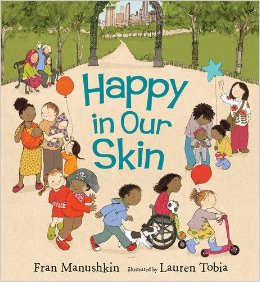
Happy in Our Skin is a great book about the diversity of people, skin types, and how our skin makes us each unique. It also brings up different ways that skin protects the body. This can end or begin a science unit on skin and human anatomy. While human anatomy is not explicitly stated as a standard in the state of Georgia, it will be a fun component to launch the unit on life sciences to make it more meaningful to students. I also like this book because it incorporates really great descriptive words for skin such as “cinnamon” and “honey gold”. This makes me think of an activity that I saw on-line once where students used paint chip cards to find their skin tone to celebrate and acknowledge diversity and moving away from categorizing people as just black or white.

What Do Parents Do? (When You’re Not Home) is a great book that students can make connections to and engage in as they imagine what their own guardians do when there are no children in the house. There are a lot of possibilities for writing that this book can be used for. I can see students writing about what their parents might do at home when they are gone. I could also see this being used to invite parents to engage in school activities by having students interview them at home and reporting back or even the teacher asking parents to send pictures of what they do after their kids leave the home that can be shared with the class. I can also see this book being used towards nurturing students’ sense of empathy towards their parents as they are encouraged to see things from their perspectives.
References
Allsburg, C. V. (1984). The mysteries of Harris Burdick.
Brown, J. (2010; reprinted edition). Flat Stanley. Harper Collins.
Carle, E. (1977). The grouchy ladybug. HarperCollins.
Lane, S. & Galey C. (2003). My brother Dan’s delicious. Pelican.
Manushkin F. & Tobia, L. (2015). Happy in our skin. Candlewick.
McDowell, C. (2015). Using stories as the landscape for writing: A case study of mentor texts in the elementary classroom.
Miner, K., Follette, P., Rasinski, T., & Yildirim, K. (2014). Scriptwriting: Exploring the use of mentor texts to extend the readers theater experience. Journal of Teacher Action Research, 1(1), 16-30.
Prelutsky, J. & Rand, T. (2004). If not for the cat. Greenwillow Books.
Pytash, K. E., & Morgan, D. N. (2014). Using mentor texts to teach writing in science and social studies. The Reading Teacher, 68(2), 93-102.
Ransom J. F. & Moore C. (2007). What do parents do? (When you’re not home). Peachtree Pub.
Thomson, B. (2012). Chalk. Two Lions.
Willems, M. (2006). Don’t let the pigeon stay up late. Hyperion Books for Children.
Yolen, J. & Teague, M. (2000). How do dinosaurs say goodnight? Blue Sky Press.

